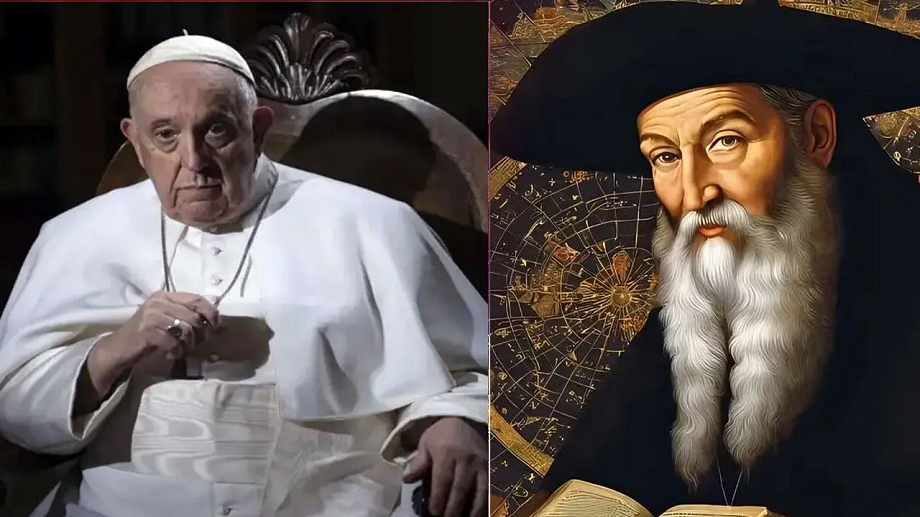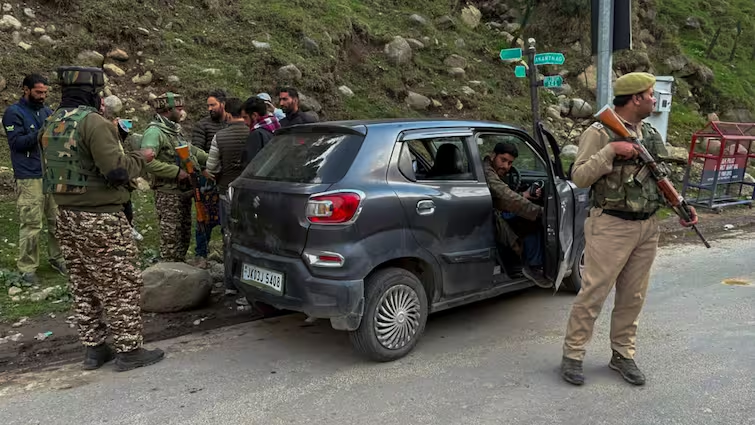The Jat who dug out Akbar's bones and burnt them in fire, story of Rajaram Jat
- bySudha Saxena
- 14 Apr, 2025

After the death of Mughal emperor Akbar, there came a time when his bones were taken out of the grave and thrown into the fire. This was done by a Jat warrior. The story of Rajaram Jat who shook the foundations of the Mughals.
Akbar, who was 63 years old, was not well. He was suffering from a stomach ailment for a long time. All the remedies and medicines were not able to cure the emperor. He was so weak that it was difficult for him to get up from the bed. The year was 1605, the month was October and the place was Agra. Emperor Akbar was currently in the 'Zenana Mahal'. Akbar's birthday had passed a few days ago. About 10 days after the birthday, one night, sounds of crying started coming from the Zenana Mahal. These sounds were telling the world that the emperor is no more.
The date recorded in history was October 27, 1605. Next fact: Akbar's death. And as per the royal tradition, Akbar's dead body was buried in the tomb. This tomb is in 'Sikandra'. About four kilometers away from Agra city. Experts say that the construction of this tomb was started by Akbar himself. But, Akbar died before the work could be completed. Later, Akbar's son Jahangir i.e. Salim got it completed. He demolished some parts and got the tomb redesigned.
But who knew then that 83 years after Akbar's death, Akbar's bones would be taken out of the tomb and thrown into the fire. Who did this? Who was that Jat leader who took Akbar's bones out of the tomb and threw them into the fire? The name of this leader was 'Rajaram Jat'.
But before the story of Rajaram Jat, we have to know about Gokula. Gokula was a brave warrior of Jats and the chieftain of Tilpat. Tilpat is in Haryana. But, some sources tell that he was born in Sinsini village. This village is in Bharatpur district of Rajasthan. It is said that Gokula was a person with revolutionary thinking. He blew the trumpet of rebellion against the atrocities and religious suppression being done by the Mughals. And, he left Tilpat and went to many other areas.
In 1669, Gokula and his followers killed the Mughal Faujdar Abdunnabi Khan in Mathura. Abdunnabi Khan was notorious for forcibly collecting taxes and destroying temples in the areas of Mathura. The Mughal soldiers fled as soon as their leader died. This incident was a big blow to Aurangzeb.
'Gokula' was taken captive
When the Jat rebellion under the leadership of Gokula intensified, Aurangzeb himself came to see the situation in Agra and Mathura region. He entrusted the responsibility of crushing this rebellion to his commander Hasan Ali Khan. Then Hasan Ali Khan marched towards Tilpat with a huge army. And after a war that lasted for about three days, Gokula was taken prisoner.
After this he was brought to Agra and presented before Aurangzeb. Vijay Kumar Pal writes in his book Invaders & Hidden Facts,
Aurangzeb pressured Gokula to convert to Islam, but he refused.
Many sources and storytellers even say that Gokula had asked for Aurangzeb's daughter's hand in marriage to mock him. Aurangzeb was enraged by this insolence and Gokula was publicly hanged at Agra Kotwali on January 1, 1670. Gokula's rebellion was the first armed rebellion of the Jats against Aurangzeb.
'Rajaram Jat' formed an army of Jats
15 years after this incident, the Jats got another revolutionary leader. Name- Rajaram Jat. Rajaram was from Sinsini village. He was the son of Bhajja Singh and was the chieftain of Sinsinwar Jats. He united two major Jat groups 'Sinsinwar' and 'Chahar'. And, gave the scattered Jats the form of an army. Organized them into regiments. Equipped them with firearms like guns, cannons and pistols. Trained them in such a way that they obey the orders of their captains.
Historian Kalika Ranjan Qanungo writes about Rajaram Jat in his book History of the Jats: A Contribution to the History of Northern India,
He (Rajaram Jat) built small forts strategically in the middle of dense forests. These were called Garhi. And he surrounded them with such strong mud walls that they could not be destroyed even by cannons.
After this, Rajaram along with his Jat army challenged the power of the Mughals in Agra district. They blocked the roads and stopped movement and looted many villages. The situation worsened so much that Agra's governor Safi Khan was almost trapped in the siege. After a heavy struggle, Agra's Faujdar Mir Abul Fazal somehow saved Akbar's tomb in Sikandra from Rajaram's attack.
After this, the Jats showed even more courage. They suddenly attacked the camp of the famous Turani warrior Aghar Khan in Dholpur, Rajasthan. In this attack, the Jats looted his bullock carts and horses. Women were also taken captive. When Aghar Khan chased the robbers with his companions, he was killed along with his son-in-law and 80 followers.
Realising the seriousness of the situation, Aurangzeb had already sent one of his senior generals 'Khan-e-Jahan Bahadur Zafar Jung Kokaltash' against the Jats in May 1686. But Rajaram's continued success and Khan-e-Jahan's failure increased his worries further.
In December, Aurangzeb ordered his son Azam Shah to personally lead a military expedition against the Jats. But Azam could only reach Burhanpur when Aurangzeb called him back because there was a greater need to save the prestige of the Mughals in Golconda.
Aurangzeb handed over the command to his grandson after his son
After this, Aurangzeb appointed his eldest grandson, and Azam's son Bidar Bakht, as the supreme commander to suppress the Jat rebellion in December 1687. Bidar Bakht was only 17 years old at that time. Khan-e-Jahan was made his advisor. But, before Bidar Bakht could reach, the Jats intensified their attacks.
Now the year in the calendar had changed. It was 1688. At the beginning of this year, Mir Ibrahim of Hyderabad, who was going as the Viceroy of Punjab, was camping on the banks of the Yamuna river near Sikandra. Then Rajaram suddenly attacked him. But, after a long and difficult battle, the Jats had to retreat. In this battle, about 400 soldiers of the Jats were killed. At the same time, about 190 soldiers of the Mughals were killed.
Rajaram and his army had certainly retreated. But, their rebellion had not stopped. They returned soon. At that time Shaista Khan had been appointed as the new governor of Agra. But, he had not reached Agra. Rajaram took advantage of this opportunity. And looted Akbar's tomb.
The looting started by breaking the huge bronze doors. Precious gems, gold and silver utensils, carpets and lamps etc. were looted. And, whatever they could not loot, they destroyed. They took out Akbar's bones from the tomb. In anger, they threw them in the fire and burnt them. They also damaged the tomb a lot. And, no one could do anything to stop this.
How did Rajaram Jat die?
At the same time, a serious civil war was going on between the Shekhawat and Chauhan Rajputs over land. In this conflict, Rajaram supported the Chauhans. At the same time, the Shekhawats got military assistance from the Mughal Faujdar of Mewat. A fierce battle took place between the two sides near Bijal village. Which is called 'Battle of Bijal'.
During this battle, Rajaram was shot by a Mughal gunman hiding behind a tree. And he died on 4 July 1688. And, as far as Akbar's tomb is concerned, it may be a symbol of architecture and history today. But, chances are that Akbar's real bones are not present in it.
PC : Lallantop




